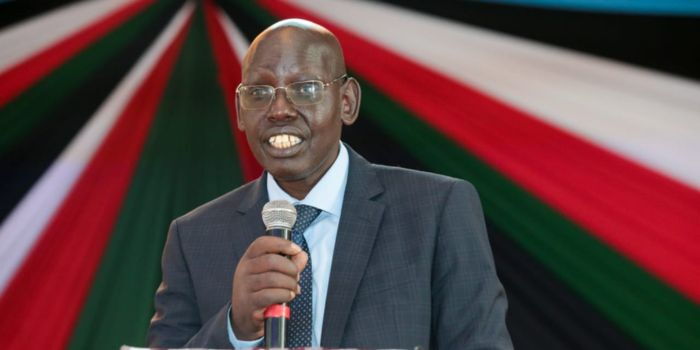The Ministry of Education has introduced detailed guidelines to manage the transition of students from junior to senior secondary school under the Competency-Based Curriculum (CBC).
These new regulations are designed to help students choose subjects and career paths that align with their strengths and future ambitions, marking a significant shift in Kenya’s education system.
Transition to Grade 10
The first group of students under CBC, currently in Grade 9, will advance to Grade 10 in January 2026. To ensure a smooth transition, these students will take the Kenya Junior Secondary Education Assessment (KJSEA) between October 27 and November 5, 2025.

The assessment process is structured to provide a fair evaluation of each student’s performance. The final score will be calculated as follows:
- 20% from the Kenya Primary School Education Assessment (KPSEA),
- 20% from school-based assessments conducted in Grades 7 and 8,
- 60% from the summative assessment at the end of Grade 9.
Career-Oriented Pathways
A key feature of the CBC is its focus on career specialization. Students will have three main academic pathways to choose from:
- Science, Technology, Engineering, and Mathematics (STEM)
- Arts and Sports Science
- Social Sciences
The Ministry of Education expects that about 60% of students will enroll in STEM programs, 15% in Arts and Sports Science, and 25% in Social Sciences. Each pathway is carefully designed to equip learners with skills and knowledge that will prepare them for higher education and future careers.
School Selection Process
Before moving to senior secondary school, students will select 12 schools based on their preferred pathway. Their choices will be divided as follows:
- 7 schools for their first-choice pathway and track,
- 3 schools for their second-choice pathway,
- 2 schools for their third-choice pathway.
Among these selections:
- 9 schools will be boarding schools (4 within their home county and 5 outside their county),
- 3 schools will be day schools within their home sub-county or county.
How Placement Will Work
Placement into Grade 10 will depend on students’ performance in the KJSEA. Top-performing students will have a special advantage in school placement:
- The top two male and female students per sub-county in each STEM track will secure placement in a boarding school of their choice.
- The best-performing boy and girl in Social Sciences and Arts and Sports Science per sub-county will also be placed in their preferred boarding school.
To ensure fairness and diversity, no more than five students from the same junior school will be placed in a single boarding institution. This rule is meant to encourage a mix of students from different schools, fostering cultural exchange and diversity.
Special Considerations for Learners with Disabilities
Recognizing the needs of students with disabilities, the Ministry has ensured that learners requiring special support will be placed in schools equipped to cater to their needs.
This guarantees that they receive the necessary assistance, resources, and a suitable learning environment to help them succeed academically and socially.
Subject Choices in Senior Secondary
Senior secondary education, covering Grades 10 to 12, will require students to study seven subjects in total. Four of these will be compulsory subjects, while the remaining three will be based on their chosen career pathway.
The core subjects are:
- English
- Kiswahili or Kenya Sign Language (KSL)
- Community Service Learning
- Physical Education
The three additional subjects will come from the student’s selected track, allowing for specialized learning in their area of interest.
Streamlined Admission Process
To modernize and simplify the school admission process, the Ministry has introduced an automated system where students can download their admission letters online using their assessment numbers.
This digital approach aims to eliminate delays and unnecessary paperwork, making the transition process more efficient.
Resolving Placement Issues
In case of any complaints about school placement, parents and students have a grievance redress system in place.
If a student is unhappy with their assigned school, their junior school headteacher will forward their complaint to the County Director of Education, who will review and address the issue.

Conclusion
These new regulations are part of the government’s broader plan to improve Kenya’s education system under the CBC.
By focusing on career pathways and student strengths, the Ministry of Education aims to ensure that learners receive relevant education that prepares them for the job market and higher education opportunities.
Join Gen z and millennials TaskForce official 2025 WhatsApp Channel To Stay Updated On time the ongoing situation https://whatsapp.com/channel/0029VaWT5gSGufImU8R0DO30


